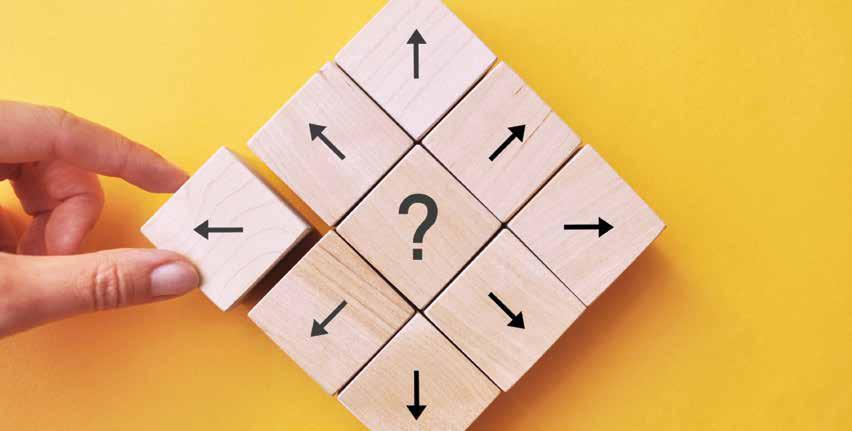
4 minute read
Research Assessing creative thinking
ASSESSING CREATIVE THINKING
Can creativity really be assessed? Anna Bullen, Head of Academic Drama, investigates.
I started looking at this question from the perspective of a drama teacher in order to capture the process of rehearsal in the classroom. Through observing pupils as they discuss ideas, share stories, and develop characters, I have long felt that whilst this creative process develops fundamental skills, it is difficult to prove that every student is participating because it is a largely internal process.
World Economic Forum 2022 Skills Outlook
The World Economic Forum has identified the growing and declining skillsets that will be required in the future, and this shows a clear demand for us as educators to ensure that creativity is carefully nurtured and developed. Research by the Australian Council for Educational Research (ACER) highlighted the necessity for this to be investigated. Creativity at first glance seems intangible and unmeasurable but in fact the creative process can be monitored and assessed. ACER identified three strands of creative thinking: generation of ideas; experimentation; and quality of ideas. This provided a starting point for our monitoring here at STAHS.
Zoë Briggs and I began by working on the Assessment Lead Programme to develop a framework to monitor and assess the rehearsal process of a devised theatre project with Year 9 pupils. I attended a conference on assessing creativity and was introduced to a trial programme in Scotland. Creative Bravery were responding to the World Economic Forum’s Skills Outlook and had developed projects specifically to nurture and assess creative skills. They had also developed a new way to monitor the creative process, identifying five areas that can be quantified during a creative discussion, task or rehearsal. Known as the ‘Stella Assessment Tool’, they designed a star-shaped diagram with each arm representing an element of the creative process: research; communicate; conceptualise; fail and fix; and evaluate. After each lesson, pupils could then fill in their own diagram to evaluate how they had contributed to the lesson. This idea appealed to me as a quick way to gather information and for pupils to reflect on their work.
Using the Assessment Lead Programme’s four pillars of assessment, we devised a rationale for our project:
Purpose To give pupils understanding and ownership of creative process. Validity Requirement to write about their creative process in the NEA. Reliability ACER research and Creative Bravery research. Value To develop creative thinking skills and give all pupils the opportunity to contribute to the process.
We discussed with our Year 9 classes how they perceived creativity and whether they thought it should be assessed. They identified creativity as hugely important but some were suspicious of why it needed to be assessed at all.

The project our pupils were working on was to create a piece of Theatre of Protest. They could choose a topic that was important to them and then work with peers to devise and perform a piece of theatre that would raise awareness for their audience. We gave them a starting point of three famous photographs from historical moments of protest and shared specific techniques to give voices to these moments, to develop characters and writing from them. We then provided them with the Stellar Assessment Tool so they could reflect on the process after each lesson. Pupils were working in groups of around five and quickly started to fall into roles such as leading on ideas, agreeing with ideas or being passive. My hope was that the assessment tool would encourage the more passive pupils to consider how they were contributing and then help them to communicate. Likewise, the louder leaders might recognise how well they communicate and reflect on whether they were truly listening to others.
Figure 1: Image of the Stellar Assessment Tool

We also developed a table that pupils could annotate throughout the rehearsals, based on the structure of the GCSE NEA Drama written requirements. Pupils could make quick observations about the process and then notate more detailed bullet points as they went along. This was kept in their exercise books and could be reviewed by the teacher at any point in the process. We could immediately see evidence of the individual’s creative responses. Although we were focusing on the process rather than the outcome, having these measures in place led to improved outcomes in the final performances.
We now have a framework with which to measure the creative process in the classroom and hope to share and develop this with other subjects. We will also apply our findings to the GCSE Devising process in Year 10.
References:
Bullen, A., 2002. Can creativity be assessed? Students at STAHS. Recording. Good, H., 2001. Creative Bravery. Glasgow. Ramalingam, D., Anderson, P., Duckwork, D., Scoular, C. and Heard, J., 2020. Creative thinking: skill development framework. Australian Council for Educational Research. Stellar Summative Assessment, 2022. Available at: https://stellarassessment.co.uk.










